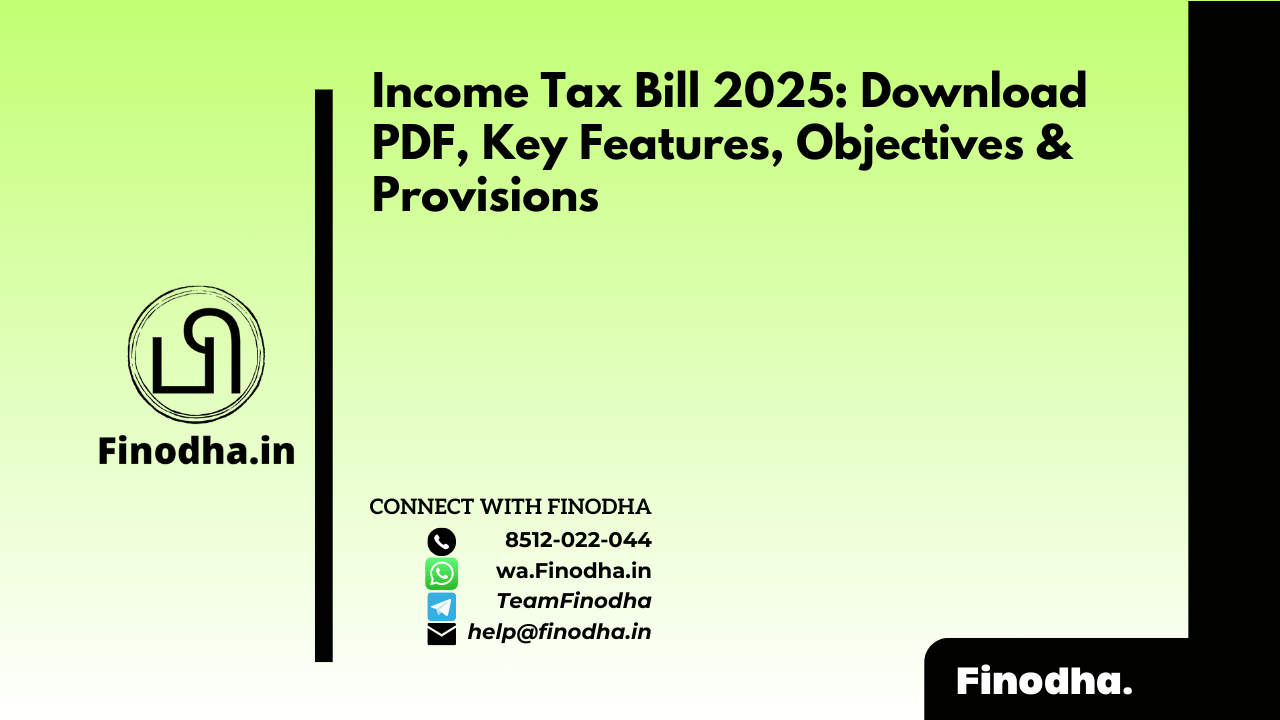Important Keyword: Chapter VI-A, NPS, Pension Income, Section 80CCD.
Table of Contents
Section 80CCD: Deduction for Contribution to Pension Fund
Planning for retirement is a critical aspect of financial management, and the Income Tax Act offers incentives to encourage savings through provisions like deduction under section 80CCD. This deduction is aimed at individuals who contribute towards the National Pension Scheme (NPS) or Atal Pension Yojana (APS).
U/S 80CCD, taxpayers can claim deductions for contributions made to these retirement schemes. The National Pension Scheme is a voluntary contribution-based pension system, while the Atal Pension Yojana aims to provide pension benefits to unorganized sector workers. Both schemes offer taxpayers avenues to build a retirement corpus while reducing their taxable income.
Basics of Section 80CCD
The Income Tax Act allows individuals aged between 18 and 60 years to avail of tax deductions for contributions made towards the Pension Scheme of the Central Government, National Pension Scheme (NPS), or Atal Pension Yojana (APY).
Three parts of section 80CCD allow tax deduction subject to different conditions and limitations.

Note: If the taxpayer opts for the new tax regime, then they will not be eligible to claim the deduction under this section.
Sec 80CCD (1)
Section 80CCD(1) allows tax deductions to all individuals. Further, this section is also applicable to NRI individuals.
Below are the deduction limit under this section:
| Category | Maximum Deduction Limit |
| In case of a Salaried Individual | 10% of the Salary (Basic + DA) up to INR 1.5 lakh |
| In case of Self Employed Individual | 20% of Gross Total Income up to INR 1.5 lakh |
Sec 80CCD (2)
Employers can indeed contribute to an employee’s NPS (National Pension Scheme) account, and these contributions can be equal to or exceed the employee’s contributions. Section 80CCD(2) specifically covers such employer contributions for salaried individuals.
Below are the deduction limits under this section:
| Category | Maximum Deduction Limit |
| In case of a Salaried Individual | 14% of the Salary for Government Employees and 10% of the Salary in case of Other Employees |
| In case of Self Employed Individual | The deduction under this section is not available for self employed individuals |
Sec 80CCD(1B)
Section 80CCD(1B) of the Income Tax Act allows individuals to claim an additional deduction for contributions made to the National Pension Scheme (NPS), up to a maximum of INR 50,000. This deduction is over and above the deductions available under Section 80CCD(1) and Section 80CCD(2). Therefore, taxpayers can claim deductions under all these sections simultaneously when filing their returns for the relevant financial year.
Note: The INR 50,000 deduction under Section 80CCD(1B) is independent of the cumulative threshold limit of INR 1.5 lakh that applies to Section 80C, Section 80CCC, and Section 80CCD(1).
Example to Illustrate the Deduction
Example 1: Ajay, a salaried individual, makes an NPS contribution of INR 30,000.
Calculation:
- Under Sec 80CCD(1): Ajay can claim a deduction for his contribution up to 10% of his salary, subject to the overall limit of INR 1.5 lakh (along with Sections 80C and 80CCC). In this case, Ajay’s contribution of INR 30,000 falls within this limit.
- Under Sec 80CCD(1B): Ajay can claim an additional deduction of INR 30,000 for his NPS contribution. This is over and above the INR 1.5 lakh limit applicable under Section 80C, Section 80CCC, and Section 80CCD(1).
Thus, Ajay can claim a total deduction of INR 30,000 under Section 80CCD(1B) for his NPS contribution.
His salary structure is as below:
| Basic Salary | INR 3,50,000 |
| Dearness Allowance | INR 1,50,000 |
| Investments under Section 80C | INR 80,000 (Hence, Section 80C available limit is INR 1,50,000 – INR 80,000 = INR 70,000) |
When determining the eligible deduction under NPS, the amount is the lesser of the following:
(i) The actual NPS contribution, which is INR 30,000
(ii) 10% of Basic Salary plus DA, amounting to INR 50,000
Thus, Ajay can claim a deduction of INR 30,000 under Section 80CCD(1) for the financial year.
If the total investments under Section 80C are INR 1,30,000, then the deduction is capped at the remaining amount of INR 20,000.
For instance, Mr. Harshil, a Central Government employee, contributes INR 40,000 to the NPS scheme, with his employer also contributing an identical amount of INR 40,000.
His salary structure is as below:
| Basic Salary | INR 4,50,000 |
| Dearness Allowance | INR 1,50,000 |
| Investments under Section 80C | INR 70,000 (Hence, Section 80C available limit is INR 1,50,000 – INR 70,000 = INR 80,000 ) |
To determine the eligible deduction for NPS, you consider the lower of these two amounts:
(i) The actual NPS contribution, which is INR 40,000
(ii) 10% of Basic Salary plus DA, which is INR 60,000
Therefore, Harshil can claim a deduction of INR 40,000 under Section 80CCD(1) each financial year.
Additionally, Harshil can also claim a deduction for his employer’s contribution under Section 80CCD(2). The eligible deduction here will be the lower of these two amounts:
(i) The NPS contribution, which is INR 40,000
(ii) 14% of Basic Salary plus DA (for government employees), which is INR 84,000
Thus, Harshil can claim the entire INR 40,000 under Section 80CCD(2).
Supporting Documents
Supporting Documents Taxpayers can submit Receipts of Contribution to the Retirement Benefit Pension Scheme along with standard documents like Form 16.
Read More: Section 80D: Deduction for Medical Insurance Premium
Web Stories: Section 80D: Deduction for Medical Insurance Premium
Official Income Tax Return filing website: https://incometaxindia.gov.in/




